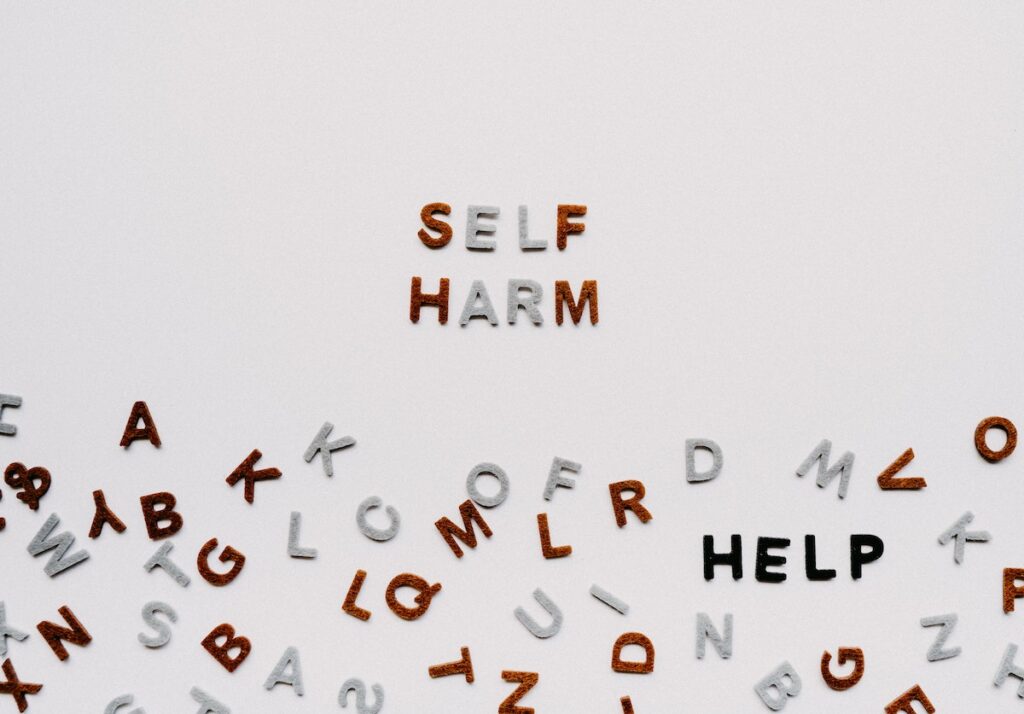
National differences in terms of suicide terminology exist, causing problems for researchers and clinicians alike (e.g. the use of the term non-suicidal self-injury) (Kapur et al., 2013). Global consensus is lacking beyond the WHO definition of “self-harm” in its broadest sense (WHO, 2016a). So, how can we be sure that we are describing and researching the same concept if we can’t agree on nomenclature?
We should never forget that suicide and self-harm remains a significant public health concern. Globally, approximately 800,000 people per year die by suicide, while over three quarters of them are from low and middle income countries (WHO 2016b). In contrast, the vast majority of research and discussion about appropriate terminology, is focused in high income populations (Goodfellow et al 2019).
However, self-harm terminology has developed over the last few decades from paternalistic professionally driven language to that informed by patients and their representatives as well as specialised clinicians. Being appropriately sensitive and precise in these situations is important to enable accurate and informed communication between groups of health professionals, between health professionals and the public, and also within the wider media.
In this paper, the authors were aiming to obtain a snapshot understanding of words used to describe self-harm and their exact meanings on a global scale. They wished to produce a minimum set of terms of agreed terms, and also explore broad differences between lower/middle (LMICs) and higher income countries (HICs). LMICs may have fewer resources including specialists in self-harm, which may influence generally adopted nomenclature. However, the authors did not produce a testable hypothesis relating to this, as they felt the research background to be too sparse.

This study aims to understand the words used to describe self-harm and their meanings on a global scale.
Methods
The authors used data from the ‘International Study of Definitions of English-Language Terms for Suicidal Behaviors (ISDELTSD)’ survey.
Initial plans involved completion of the survey by the national representative from either the International Association for Suicide Prevention (IASP) (or the World Psychiatric Association (WPA) or World Organisation of Family Doctors (WONCA) if this was more appropriate). However, as is common with surveys, the immediate response was poor using this strategy. Therefore, the authors widened participation to include all IASP members.
The details about the survey are not given in the paper, but are easily accessible from the published protocol. This is very similar to the published article apart from the change in those invited to take part.
The authors assessed outcome, intent, knowledge, and agency within suggested definitions. Relating to suicide, respondents were asked to select statements that most agreed with their definitions. Participants could select more than one response where they were not mutually exclusive. For non-fatal self-harm, respondents were given a set of vignettes, and asked to select the suggested response with which they most agreed.
The authors analysed survey results focusing on “most frequently used terms”, calculating odds ratios with 95% confidence intervals comparing results from HICs to LMICs. As there was more than one respondent from some countries, the authors calculated weights where this was appropriate and incorporated these into sensitivity analyses.
Results
Most of the completed surveys were returned by representatives of HICs (89 from 33 countries versus 37 from 30 LMICs), which unfortunately made it harder for the authors to explore their original aims. Nonetheless, the spread of LMICs covered by the responses was equivalent to that from HICs.
Suicide
Suicide was well-endorsed by respondents as “an act that necessarily leads to death”. The responses for intent, knowledge, and agency were mixed, although the vast majority agreed with the statement that suicide is “an act that can be performed with the knowledge of a fatal result but the person is not certain of that result”.
Non-fatal self-harm
“When a person harms himself or herself with the intention to die, and survives” was almost universally termed a “suicide attempt” with very few respondents endorsing parasuicide, self-harm, deliberate self-harm, non-fatal suicidal behaviour, or self-injurious behaviour.
When the vignette above was altered to state that there was no intention to die, then the response was more mixed for both (a) if the person survived, and (b) if the person sadly died. Self-harm was the most common option (at 25-30%) if the person survived. If the person died, suicide was the most common option even if the person had no intention to die (20-25%) or could not state intentions (25-33%).
Surviving but being unclear in terms of intentions or refusing to state intentions was variably endorsed as self-harm, or a suicide attempt, or deliberate self-harm by between 15-40% of respondents.
Suicidal ideation was the preferred term across countries for people who occasionally or continuously think of suicide with/without intent or without any related behaviour, or when someone hopes for death by killing themselves. This was opposed to when someone hopes for death but has no thoughts of killing themselves, where “death wishes” was generally endorsed.
These findings were similar across LMICs and HICs, although there were a few exceptions described in the paper. A person harming themselves but for whatever reason not being able to state intentions was felt to be a suicide attempt in LMICs most commonly, whereas in HICs the most common response was self-harm. When in a similar situation, and a person sadly dies, the most common response in HICs was an undetermined death, whereas in LMICs it was suicide. LMIC respondents did not generally endorse the term preparatory suicidal acts. Initiating a suicidal act but a person stopping themselves or being stopped by someone else before sustaining injuries was more likely to be called an aborted suicidal attempt in HICs and an interrupted suicidal attempt in LMICs.
Sensitivity analysis
This did not change the most endorsed items, although it did make the findings more similar across LMICs and HICs when examining the differences listed above. Therefore, apparent differences between the groups of countries should be considered with caution.

The findings suggested that the endorsement of different self-harm terms was similar across LMICs and HICs, with just a few exceptions.
Conclusions
The authors should be commended on undertaking the first survey attempting to determine internationally agreed definitions relating to suicide and self-harm thoughts and actions. For this, the authors collated a table of generally agreed terms across respondents from around the world.
Putting these in context with the existing literature is a good sanity check that the definitions endorsed here make sense. This highlighted a few issues to the authors: in particular, the general endorsement that suicide is “an act carried out by oneself to the end of the action”. The authors point out, quite correctly in my opinion, that this is likely not to be universally true: positioning oneself knowingly in serious harm’s way is generally accepted as a suicide. Here may lie an issue with surveys, as it is can be difficult to capture the breadth of real-life contexts. The authors interpret that respondents were meaning to exclude assisted suicide or euthanasia, where the person involved may ask for death but others carry out the act on their behalf. This is an understandable distinction and highlights the nuances in terminology and variable circumstances. Finding a good middle ground in terms of the definition is a challenge for research of the future.
However, some interesting agreements from respondents also emerged:
- Explicitly intending to die is not necessary for a definition of suicide. However, the act should be commensurate with knowledge of the risk of death.
- A suicide attempt should include a focus on intending to die. There was complexity as to whether self-harm should be separate from suicide, reflecting ongoing discussions in the field.
- Deliberate self-harm, as a term, was generally not endorsed due to its potentially stigmatising nature.
- The term suicidal ideation may benefit from subdivisions to improve clarity.
Are terms different between high-income countries and low/middle-income countries?
There was in general good agreement between HICs (high-income countries) and LMICs (low/middle-income countries) respondents.
The authors highlighted that HIC respondents were less likely to label death and non-fatal events with an unclear intent as suicide and a suicide attempt respectively. Other differences were limited, and a similar breadth of terms were adopted across the national income divide.

Survey respondents agreed that for suicide one must be aware of the risk of death, but may be ambivalent about intending to die.
Strengths and limitations
The authors acknowledge issues with their data collection:
- There was generally a low participation rate (under one third of all WHO member countries);
- There was a differential response from HICs versus LMICs both at the country and participant level: 30 LMICs took part compared to 33 HICs (even though LMICs account for more than two thirds of countries) and there were 37 LMIC respondents versus 89 HIC respondents.
There were attempts to counter this second problem with sensitivity analyses. In the discussion, these are reported as showing similar results where the most chosen item did not change for any vignette. In the results, the greater detail shows that when the data was analysed by country, rather than at an individual participant level, differences narrowed for some answers between HIC and LMICs. These results are included in supplementary material. Therefore, differences between HICs and LMICs shown at the individual level analysis (as presented in the main paper) should be interpreted with caution.
Having to change the methodology of participant recruitment after the start of the study was not ideal, but the authors were in a very difficult situation. It was understandable to open it up to a wider potential pool of respondents to increase the reliability of findings. However, there were a few problems with this. The authors originally had a definition of a “suicide expert” that they wished to reply to the survey: the “IASP (or WPA or WONCA where appropriate) national delegate”. This was broadened to any IASP member, and thus it is less clear that all respondents were of equivalent expertise. Another issue with broadening participation is that original statistical plans had to be amended as some countries had multiple respondents. It also resulted in an unintentional bias towards HIC countries with over two times the number of participants from a similar number of countries.
The authors also restricted themselves to English language. This made analysis easier as they were focussing on definitions of English words, but it does impair generalisability to other populations. As the authors acknowledge, it meant that in many countries participants would have read vignettes and questions in a foreign language.
All authors were from HICs or large MICs with no countries in Africa, mainland Europe, and South America (c.f. Central America) represented. A broader cultural diversity reflected in the authorship may have changed the methodology and interpretation of the results. There is also quite a lot of self-citation in the reference list, although this can be tricky in a narrow research field. Nonetheless, as the barriers in nomenclature have traditionally been in terms of the United States and associated countries versus European countries, the collaboration of the authors across this divide was fantastic.
A strength of this study is that we now have a draft version of globally accepted terms and definitions for self-harm and suicide, which can form the basis for future research (see Supplementary material). The authors should be commended for this result.

A broader cultural diversity reflected in the authorship may have changed the methodology and interpretation of the results.
Implications for practice
In some respects, the authors have gathered information about use of terminology from a variety of countries across the world, and so the results of this study may not immediately lead to a change in clinical practice per se. However, personally, this study has increased my confidence that, when discussing self-harm with professionals around the world, there will be more commonalities than differences relating to the nomenclature we use. This can only be a good thing.

Hopefully, when discussing self-harm with professionals around the world, there will be more commonalities than differences relating to the nomenclature we use.
Support
If you feel you need help or someone to talk to, please contact Samaritans.
Making a Safety Plan
A Safety Plan reminds us what we can do to help ourselves during emotionally hard times or in a crisis:
- Practical ways to make ourselves safer
- Helpful and practical ways to get through tough times, lift our mood or distract ourselves
- People to give support including specific helplines and online support and ways to access healthcare
- What we can do if we feel we are at immediate risk of harming ourselves
You can make one by yourself or with someone you trust. If you’re worried about someone you could work through their Safety Plan with them or help them to make a Safety Plan.
4 Mental Health coproduced StayingSafe.net with videos, advice and an online Safety Plan with pre-populated suggestions.
Statement of interests
Angharad has previously worked and published research with two of the authors (KH, ACK), but had no involvement in this study.
Links
Primary paper
De Leo D, Goodfellow B, Silverman M, et al. (2021) International study of definitions of English-language terms for suicidal behaviours: a survey exploring preferred terminology. BMJ Open 2021; 11:e043409
Other references
Kapur N, Cooper J, O’Connor RC et al. Non-suicidal self-injury V. attempted suicide: new diagnosis or false dichotomy? Br J Psychiatry 2013;202:326-8
World Health Organisation. International classification of diseases (ICD), 2016. Available: https://www.who.int/classifications/icd/en/ [Accessed 28/5/21]
World Health Organisation. Suicide data, 2016. Available: https://www.who.int/mental_health/prevention/suicide/suicideprevent/en/ [Accessed 28/5/21]
Goodfellow B, Kolves K, De Leo D. Contemporary definitions of suicidal behaviour: a systematic literature review. Suicide Life Threat Behav 2019;49:488-504.
Photo credits
- Photo by Annie Spratt on Unsplash
- Photo by Christina @ wocintechchat.com on Unsplash
